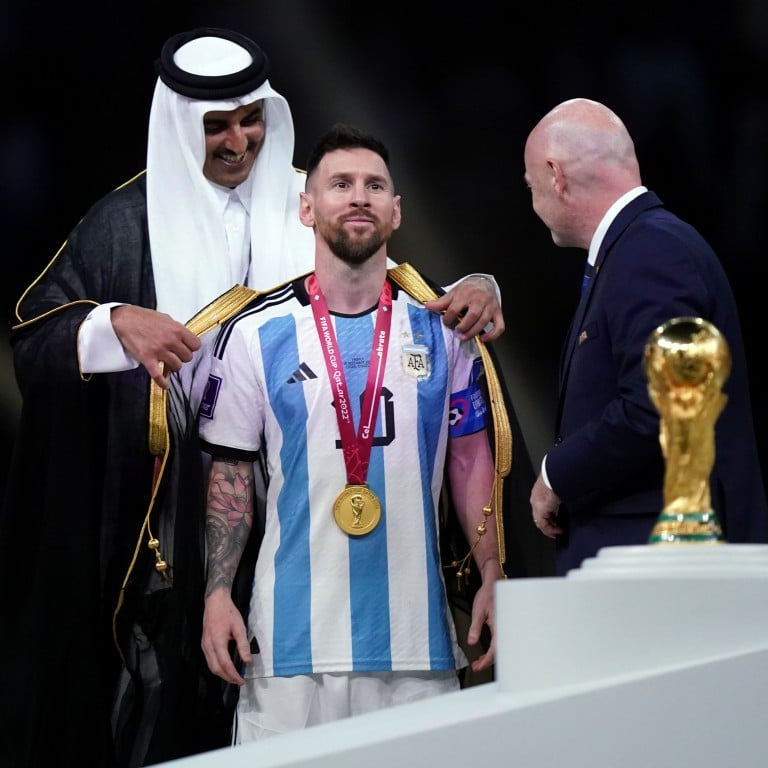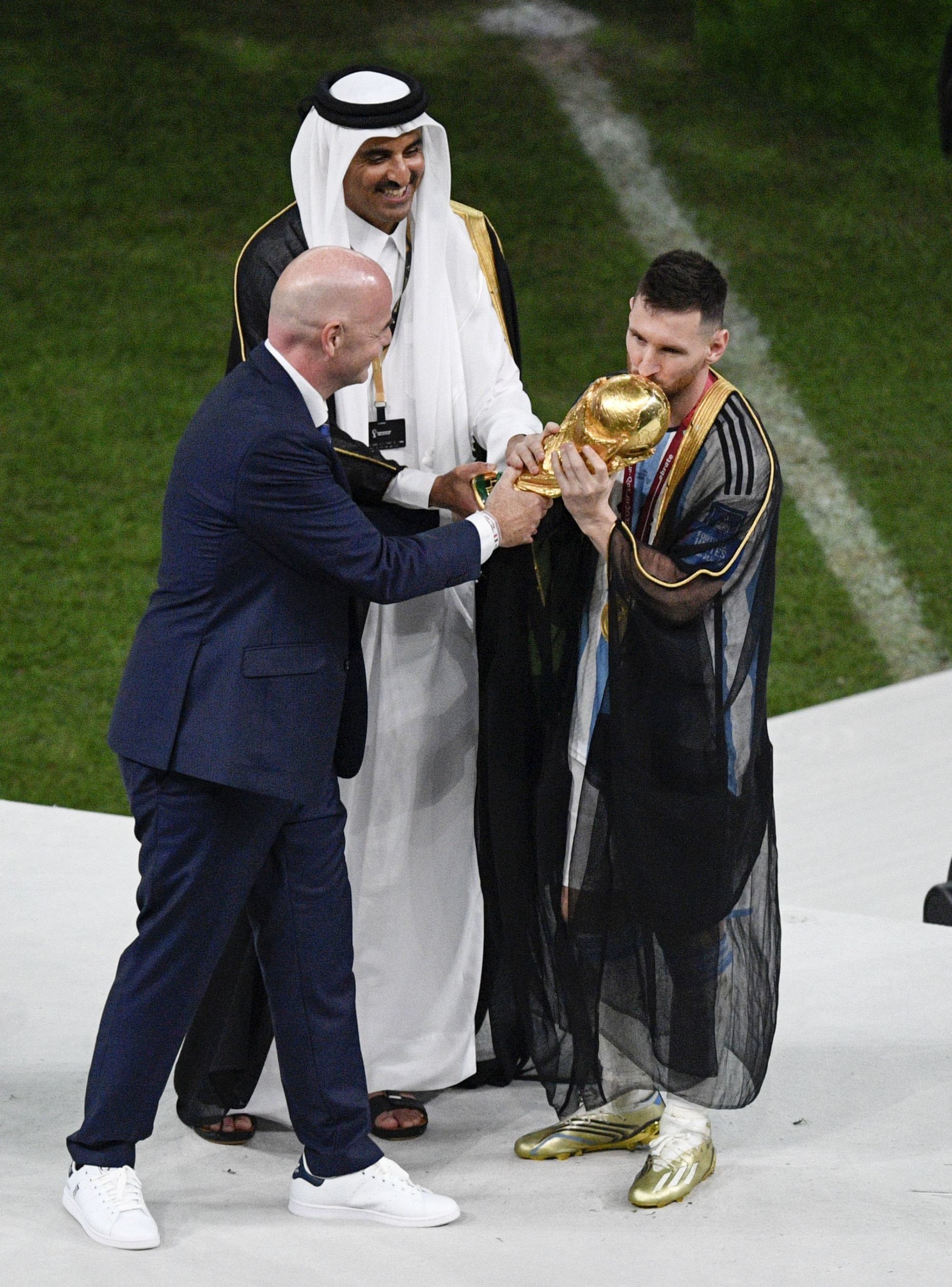
Fifa World Cup: Lionel Messi wearing traditional bisht splits opinion online
- An iconic moment that will live in World Cup history, or an unnecessary act that overshadows Messi’s historical achievements?
- ‘I get the respect, but let him lift the trophy in his national colours, give it to him after,’ said one user on Twitter
Scenes of Lionel Messi being draped in a black bisht by Qatar’s Emir Sheikh Tamim as he lifted the World Cup trophy have sparked controversy online.
While it may have been an honour for Messi to be dressed in the traditional Arab attire, others have seen it as “unnecessary” and overshadowing his historical achievement.
Among those condemning the host’s act was BBC host Gary Lineker. The former England international said it was “a shame” to have covered his shirt during what was “a magic moment”.
Fellow BBC pundit Pablo Zabaleta, who played alongside Messi at the 2008 Olympic Games in Beijing and the 2014 World Cup in Brazil, asked “Just why? There is no reason to do that.”

Bisht is a traditional Arab cloak typically worn by dignitaries at weddings and other formal occasions. It also denotes power and has been used as the official robe of kings.
Some saw the bisht draped on Messi as a prestigious, noble and beautiful symbol – something that Qatar’s Emir used to show appreciation and respect. In Arab culture dressing someone with a bisht is an act of courtesy and high appreciation in Qatar.
One Twitter user wrote: ‘It’s also worn in graduation ceremonies, which kinda fits Messi’s situation.”
Yet, others were critical of the occasion.
Laurie Whitwell, a sports writer at The Athletic, wrote on Twitter that it was “unnecessary”.
“Qatar obviously wanted to be present in the World Cup trophy pictures, hence putting that black bisht on Messi. But just made for a weird, unnecessary look amid a sea of blue + white sporting shirts. It should be a moment for the players, not the host. Grossly indulgent.”
Another added that “I get the respect, but let him lift the trophy in his national colours, give it to him after.”
History was also called upon. Some cited Brazil legend Pele, who wore a sombrero after winning the 1970 World Cup in Mexico.
“Everyone saw that as coexistence and sending a message that we are all one in football,” one Twitter commentator said.
“But when Messi wore bisht people saw it as a gesture that ruined the moment, live your life and stop whining over little things.”
Others were quick to clarify that Pele was only given the sombrero after he lifted the Jules Rimet Trophy. In any previous World Cups, the host country was never seen stamping culture on the winning team’s captain before the player lifted the trophy.

 - Mike Chan.jpeg?itok=EQbwYm3R&v=1669714688)